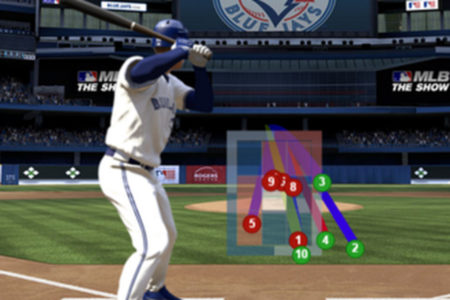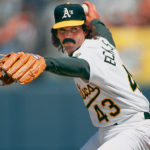You Want Speedier Games? Limit Pitching Changes—Part II
 This is the second installment of a three-part series taking a look at baseball’s pace of play. See Part I.
This is the second installment of a three-part series taking a look at baseball’s pace of play. See Part I.
Last May 2017, Brett Gardner of the Yankees dug into the batter’s box in Wrigley Field, amidst the creeping shadows deepening the color of the verdant plumage on the field, as the brilliant yellow-green ivy flickered gently on the brick walls. It was a classic sight. Eternal actually. A close game in a cathedral.
Closer versus hitter. A religious moment.
No room for error on either side in a game that Chicago led 2-0 in the top of the ninth, but the Yankees had two runners on base and were threatening. The crowd roared as if every one of them was behind the pitcher on the mound, encouraging him to strike the bum out to bring the game to a close. It was, after all, the north side of Chicago and beers were still being chugged to ease the leathery suspense of the moment. To keep the throat moist should more bellows and screeches be required to celebrate the victory.
Hardly anyone had gone home. It was that kind of game. And as Gardner dug in and fouled off several fastballs to reach a 1-2 count, the seventh fastball from Hector Rondon, the Cubs relief pitcher, was low and inside instead of low and outside. A pitch that Brett Gardner found on the meat of his bat as he flung it through the strike zone. The sound of the ball hitting the sweet spot lingered for a split second. Auguring a solid connection. A flying blur surged through the warm air until it disappeared over the right field ivy into the stunned, unhappy beer-chugging fans in the bleachers—who just as quickly threw the ball back.
And just like that the game turned. The Yankees led 3-2 and would win the game by that score. It was one of those games that was so exciting I didn’t want to see it end. But, baseball games end. And 3:17 in, the game did end. Like so many other games, more than three hours, but it was compelling drama.
The truth is not every game can be so thrilling. But no sport can offer brilliance and excellence on a daily, game-by-game basis. There has to be a contrast. The good, the bad and the ugly. You need each kind of game to differentiate the great games from the regrettable ones.
What affects these games from the sixth inning on (sometimes the fifth) is the entry of the relief pitcher. The bullpener. Hard thrower. On some teams a man out of control. On other teams an artist at work. One, two, three. And then yet on still other teams he is an arsonist brought in and making a bad situation worse—pouring gasoline on an already raging rally.
Regardless of the pitcher, just his introduction into the game slows its rhythm. Breaks the mood. Which is the point. That’s why the pitchers are brought in.
Basketball allows its teams to take a time-out. Stop the clock. Take a deep breath. There is no clock in baseball, not yet. Nor should there be.
But maybe baseball should allow pitchers a two minute break in the midst of an upheaval. Once a game. A commercial break. A chance for the pitcher to find himself. But only once a game. Maybe this would obviate the need for two or three pitching changes in an inning, and seven or eight pitchers in a game for one team.
Otherwise, by the sixth inning, the game inevitably slows down as pitcher after pitcher trudges into the game.
If you look at the chart below, notice how complete games and innings pitched have gone down progressively every ten year period, going back to the National Association of Base Ball Players in 1872, which pre-dates the National League of Professional Baseball Clubs which opened for business in 1876.
| Pitching Statistics | |||
| Pitcher | Year | Most Complete Games | Most Innings Pitched |
| Candy Cummings | 1872 | 55 | 497.0 |
| Jim McCormick | 1882 | 65 | 595.2 |
| Bill Hutchinson | 1892 | 67 | 622.0 |
| Cy Young | 1902 | 41 | 384.2 |
| Smokey Joe Wood | 1912 | 35 | —— |
| Ed Walsh | 1912 | —— | 393.0 |
| Red Faber | 1922 | 31 | 352.0 |
| Lefty Grove | 1932 | 27 | —— |
| General Crowder | 1932 | —— | 327.0 |
| Jim Tobin | 1942 | 28 | 287.2 |
| Robin Roberts | 1952 | 30 | 330.0 |
| Warren Spahn | 1962 | 22 | —— |
| Don Drysdale | 1962 | —— | 314.0 |
| Steve Carlton | 1972 | 30 | —— |
| Wilbur Wood | 1972 | —— | 376.2 |
| Steve Carlton | 1982 | 19 | 295.2 |
| Jack McDowell | 1992 | 13 | —— |
| Greg Maddux | 1992 | —— | 292.0 |
| Randy Johnson | 2002 | 8 | 260.0 |
| Justin Verlander | 2012 | 6 | 238.1 |
| Clayton Kershaw | 2014 | 6 | —— |
| David Price | 2014 | —— | 248.1 |
| Chris Sale | 2016 | 6 | —— |
| David Price | 2016 | —— | 230.0 |
| Corey Kluber | 2017 | 5 | —— |
| Chris Sale | 2017 | —— | 214.1 |
| Jameson Taillon et al | 2018 (to date) | 2 | —— |
| Max Scherzer | 2018 (to date) | —— | 181.2 |
The chart clearly shows that complete games have become almost nonexistent, and that the best pitchers, the best pitchers, barely make it past the sixth inning. Six innings times 32 starts equals 192 innings. Seven innings times 32 starts equals 224 innings.
Last season even Chris Sale did not average seven innings a start. The truth is that the Sandy Koufaxes and Tom Seavers and Steve Carltons of the pitching world who threw more than 300 innings are dinosaurs. Prehistory. So the games that took less time 50 years ago did so because managers and pitching coaches were not trotting out to the mound ten times a game.
A pitcher went eight, and then the reliever came in. Bang, bang. If only that were the case today.
Continue reading Part II

























